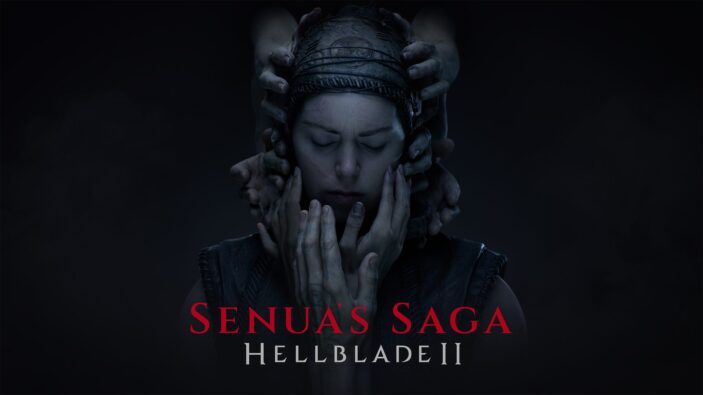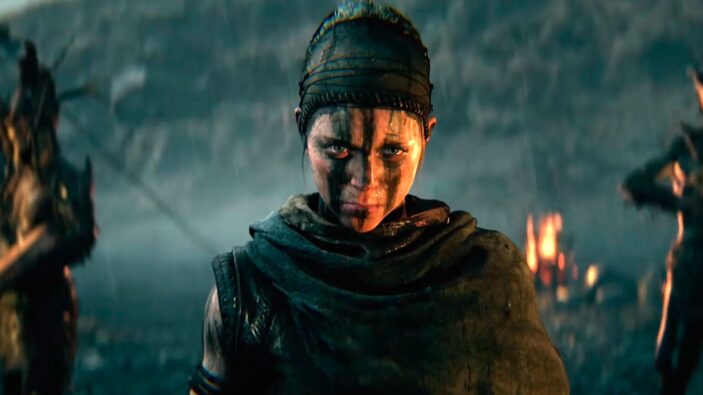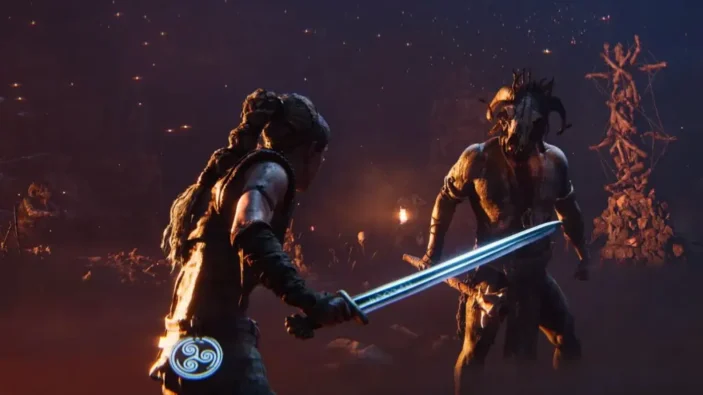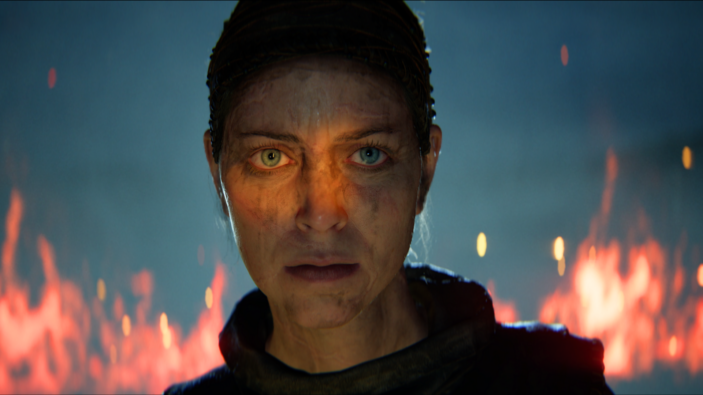
I really enjoyed Hellblade: Senua’s Sacrifice when it launched back in 2017, for its intriguing lore, emotional narrative and stellar sound design. That was really all I needed to want to return to this world in Senua’s Saga: Hellblade 2. While this sequel feels incredibly familiar in most departments, developer Ninja Theory has made every effort to fine-tune this experience with a broader scope and cleaner visuals, all while perfecting the pre-existing aspects and gameplay features of its predecessor.
To Hela and Back
Before proceeding, please note that this section will include spoilers for the previous title, Hellblade: Senua’s Sacrifice.
Senua’s Saga: Hellblade 2 opens with a short wrap-up of the first game, highlighting the fact that Senua not only literally went to Hell and back to save the soul of her deceased husband but had learned some pretty important stuff about her own heritage and mental health. Upon returning to her people, things aren’t that much better. The game begins as they are kidnapped by a brutal Viking clan, in the middle of a raging storm. Things soon go from bad to worse, as their ships are taken out, crashing onto a mysterious island and leaving Senua to virtually start from scratch, to find and save her people.
There’s certainly more to the story that I would rather not spoil, and the overall sense of scale and grandeur has been escalated in such a way that environments feel more open and detailed, while the cinematic nature of both cutscenes and gameplay feel more refined. But above all else, the moment-to-moment journey that plays in Senua’s mind is once again the real winner here. While Senua meets some interesting characters along the way, actress Melina Juergens steals the show. Her emotional range is simply incredible and it makes the tension palpable.

Her voice acting is also fantastic and there’s a bunch to listen to as Senua’s multiple streams of consciousness rattle off in her mind, prompting and pulling her in different directions to act, or not act accordingly. It also helps that the game itself looks absolutely fantastic, complete with some of the most detailed character models I think I’ve ever witnessed in-game. Unfortunately, this also extends to the game’s visceral nature, as it can get super intense and uncomfortable at times. There are select scenes of torture and extreme violence, so please be prepared. I like to think I’ve become accustomed to video game violence on screen, but this was something else.
Overall, while the story feels more grand in terms of its scope, it’s still an incredibly personal tale that never forgets its roots in the broader lore and context of Senua as the protagonist. Its linear nature can work against it at times as it limits the overall replayability, as this can be completed in around 7 hours. But it also plays out like a cinematic experience and should be treated as such. As a result, it’s an incredibly touching and memorable tale of grief and strength.
Fight Your Way Forward
From a gameplay perspective, Senua’s Saga: Hellblade 2 plays mostly like its predecessor. That’s not necessarily a bad thing, but you’ll find the overall structure remains the same. Senua will traverse various stunning environments which are intertwined with dedicated sections for combat and puzzle solving.
Combat functions the same way, with a combination of light and heavy attacks, blocks and dodges. Well-timed blocks can also be used as counters. I personally loved the combat for its cinematic qualities, as the camera hugs Senua closely, while the sound design belts out a flurry of grunts and clashes from all angles. Senua can counter weaker enemies to finish them off with a brutal attack, which admittedly made me squeamish at times. Senua also gains a Focus ability rather early on in this game, in which she can slow down time to gain the upper hand against more powerful enemies.
While the combat feels quite linear in the sense that you only really face off against a single enemy at a time, the cinematic nature and the lack of any HUD or enemy attack prompts really carry the experience to the point that while every fight might function in the same way, it never looks or feels the same. There are even a few moments where you’re fighting in a crowd of people, which feels incredibly intense as Senua is bumped around between scurrying survivors and oncoming enemies.

Dodging and blocking also feel super weighty, while the presence of physical foes as opposed to the mystical ones in the previous game, add a sense of brutality as you feel every slash of the sword, and can even see the cuts and marks you leave on enemies. While the game lacks any skill trees or upgradeable abilities, I felt that the overall length of the experience kept this combat feeling tight and fresh nonetheless.
In terms of puzzle-solving and exploration, Senua must once again complete a number of puzzles, usually to locate a sign hidden in the environment to open the path forward. For example, this might be in the form of various body parts across numerous tortured souls, which line up when viewed from a certain angle. There are also some newer puzzles which involve you lighting a path of braziers with a torch, and flipping bubble switches to open gates.
These puzzle-solving elements are relatively simplistic and don’t really take up too much time, but they add to the creepy nature of the experience and are a welcome addition for the sake of variety.
Look the Part
There’s no way around it; Senua’s Saga: Hellblade 2 looks incredible. From the detailed character models and environments, to super impressive lighting, there’s not much of this game that you can’t really appreciate visually. For as linear as the game is, there’s no shortage of sweeping landscapes and gorgeous sunsets to take in, while the impressive sense of scale applies to characters too, as giant monsters soon pose a significant threat, which is all I’ll really say about that.
In terms of performance, Senua’s Saga: Hellblade 2 runs well enough. It does run at 30fps on either Xbox Series X/S or PC, but it’s incredibly steady. Given the cinematic nature of the experience, it’s fitting, and I would personally rather have a solid 30fps experience, as opposed to a 60fps experience that never really delivers on its promise.

It’s also worth mentioning here that the sound design is absolutely fantastic. Thanks to the game’s Binaural Audio, I recommend playing this with headphones as Senua’s multiple voices come at you from various angles. It’s super creepy and adds to the immersion.
Final Thoughts
Senua’s Saga: Hellblade 2 might be incredibly linear and clock in at around 7 hours. The puzzles and combat also feel familiar and at times, simplistic. But it’s hard to take away from the fact that the cinematic quality boosts almost every aspect of the experience, making it incredibly memorable and satisfying to simply witness as it happens.
The narrative is yet again, a deeply personal and cathartic one, while the stellar visuals and sound design only heighten the overall sense of immersion. If you enjoyed Hellblade: Senua’s Sacrifice in any way, you’re going to love this. But even if you’re new to this saga, there has never been a better time to jump in.
FOUR STARS (OUT OF FIVE)
Highlights: Superb visuals; Emotional narrative; Excellent motion capture performances; Cinematic quality makes everything feel visceral
Lowlights: Overall experience is quite short and linear
Developer: Ninja Theory
Publisher: Xbox Game Studios
Platforms: Xbox Series X/S, Windows PC
Available: Now
Review conducted on Xbox Series X with a code provided by the publisher.
